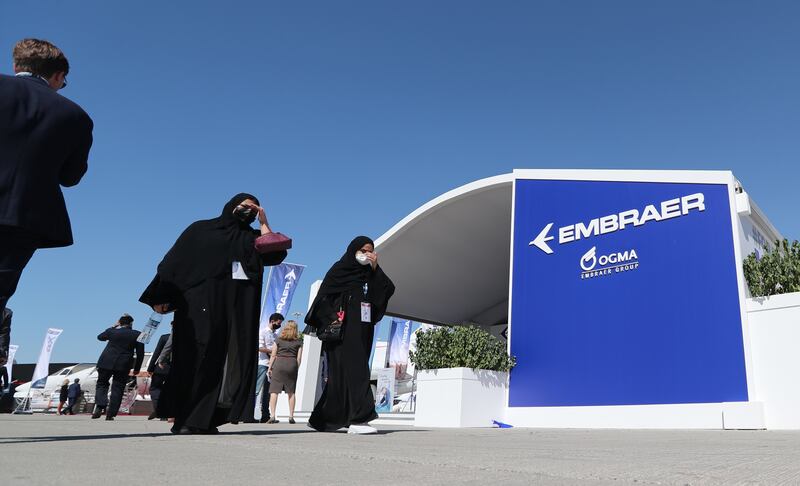Brazil's Embraer plans to launch a new turboprop project next year and expects it to hit the market by 2027.
The proposed turboprop will be a 70- to 90-seater and will be capable of running entirely on sustainable aviation fuel, Arjan Meijer, president and chief executive of Embraer Commercial Aviation, told The National in an interview at the Dubai Airshow on Wednesday.
“The turboprop that we're talking about, which is a smaller aircraft than the Embraer E2, is 70 to 90 seats and comes to market in 2027 as it stands today and will be 100 per cent SAF [sustainable aviation fuel] capable,” Mr Meijer said.
The TP70 and TP90, working names for the 70-seater and 90-seater respectively, will be offered in a single-class layout.
“The interesting thing is that TP70 could also fly in three-class layout with 50 seats,” he said.
The turboprop could be a “platform for Embraer going forward to bring new technologies to market down the line, but that will probably be in the late 2040s when we will be able to have alternate fuels,” Mr Meijer said, without elaborating.
Embraer expects the aviation industry to be smaller but more profitable and sustainable following the Covid-19 pandemic, it said in its 20-year market forecast for commercial aircraft demand, revealed during the Dubai Airshow.
The industry will be 20 per cent smaller in the next two decades, compared with the previous forecast, because of slower growth in the global economy following the pandemic, Embraer said.
The world's third-largest plane maker forecasts global demand for new aircraft of up to 150 seats to reach 10,900 jets and turboprops by 2040, worth $650 billion.
Nearly 60 per cent will be for replacement of ageing aircraft and about 40 per cent for growth.
Of the 10,900 aircraft, 7.5 per cent will be delivered to the Middle East and Africa.
“Over exposure to long-haul, intercontinental traffic is a liability for the future. Fleet flexibility will be essential to explore underserved short-to-medium haul markets,” Embraer said in its outlook.
Future growth opportunities lie in the “untapped potential” of the Middle East’s domestic and intraregional markets, which are still “mostly underserved and unconnected”, it said.
Global traffic is projected to grow 3.3 per cent each year until 2040 and is expected to return to pre-crisis levels by 2024, Embraer said.
Asia-Pacific and Latin America will lead the world's regions in terms of traffic growth at 4.2 per cent each, followed by 3.8 per cent in Africa and 3.6 per cent in the Middle East.
About 15 to 20 per cent of business travellers will not return to air travel and are expected to continue working remotely, according to Embraer.
“The emerging work-from-home trend will raise the importance of regional aircraft in a post-pandemic environment. Decentralised home offices and population migration away from big cities will renew the need for greater regional connectivity and more regional aircraft,” the plane maker said.
The need for face-to-face meetings will never disappear, although the frequency of business travel for internal meetings and training will decline, it added.
In terms of air freight, Embraer forecasts worldwide demand for 700 smaller aircraft over the next 20 years. Of these, 65 per cent will be used for growth of the global fleet and 35 per cent for replacement of older aircraft.
“Retailers growing their e-commerce businesses will look to secondary markets to ensure order availability, fast delivery and service reliability. Demand for smaller all-cargo aircraft will increase as consumers buy more products online,” Embraer said.
Standard body jets are expected to represent 48 per cent of the cargo aircraft fleet in service by 2040.







